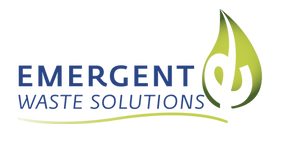ATS Technology
Stated simply, thermolysis is the process whereby carbon based feedstock, such as wood fibre, are placed in an oxygen deprived reactor and heated to a point whereby the feedstock cracks at the molecular level and separates into its constituent chemical components: carbon, oil and Renewable Natural Gas (RNG).
For many years thermolysis held the promise of dealing with society’s waste streams without creating pollution, while at the same time creating valuable products. However, technological challenges saw dioxins, furans and other pollutants created from the pyrolysis process, while the finished products were cross-contaminated and of low value.
EWS’s (ATS) incorporates a (patent pending) combination of steam, direct heat, indirect heat and medium pyrolysis, ensuring a complete penetration of the feedstock and a complete separation of the constituent elements. Further, the application of a unique condensing system ensures that the three elements remain separated and that dioxins and furans do not form.
Additionally, the use of steam helps to make the ATS one of the safest systems in the market place by reducing fire hazard and eliminating the need for vacuum pumps.
Patent Abstract:
Apparatus and methods of operating hopper valves, reaction chambers, condensers, orifices, furnaces and chemical processors are disclosed and claimed. Several of the embodiments are specific to thermolysis manufacturing processes. Some of the embodiments are applicable in situations where heat is used to decompose organic material, such as in the burning of waste. The various embodiments contribute to improved quality for outputs such as carbon black and/or improved reliability by removing the potential for tar buildup and/or removing the possibility of dioxin contamination as a form of pollution.
